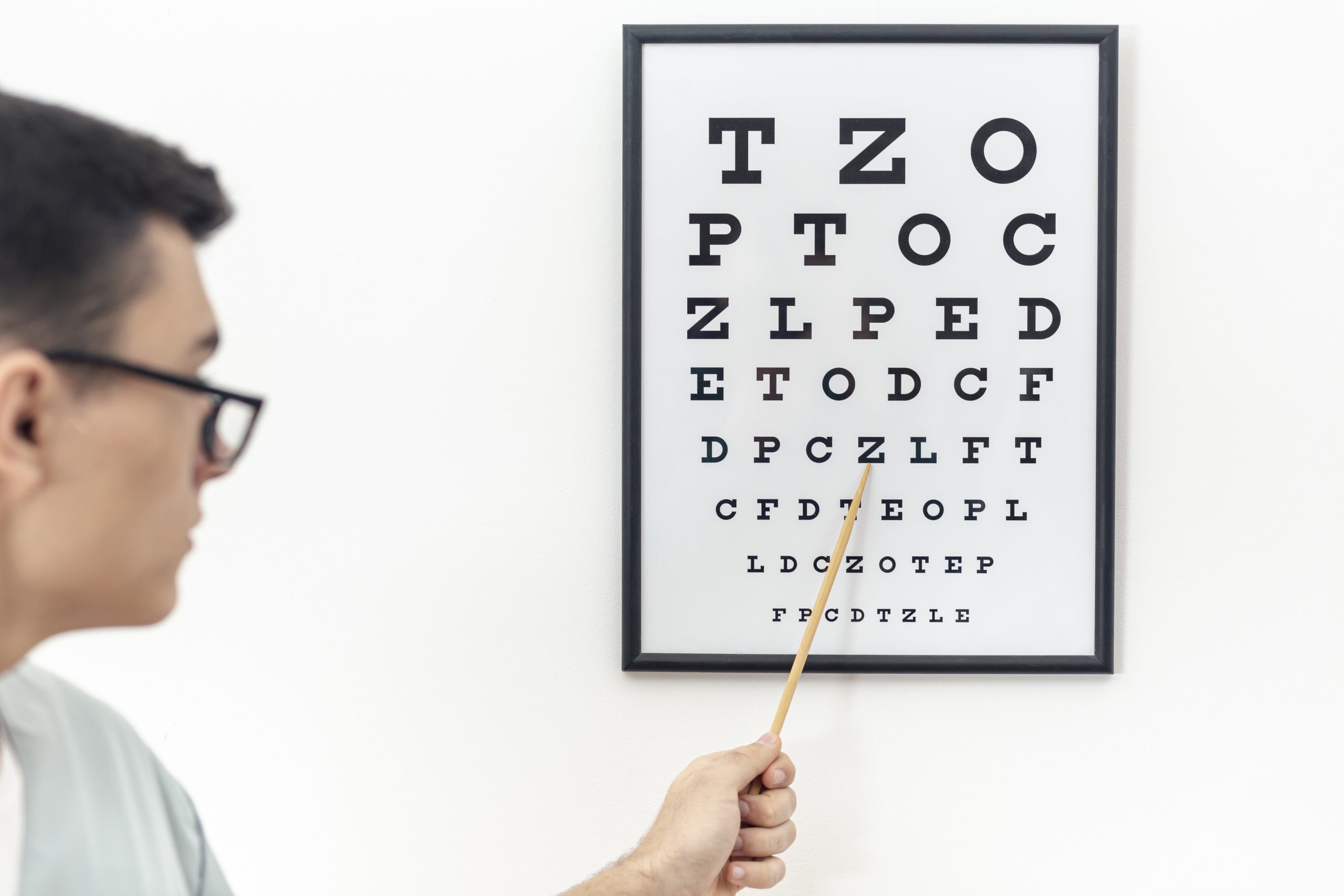Do you ever wonder what it’s like to live with vision impairment? How it affects your daily life and interactions? In this article, we’ll explore the definition and meaning of vision impairment, along with its different types and causes. Vision impairment refers to eyesight that can’t be corrected to a normal level. It can be caused by a loss of visual acuity or field. We’ll also delve into its impact on children’s development and available resources for assistance. Let’s gain a deeper understanding of the challenges and implications of vision impairment.
Causes of Vision Impairment
There are several causes of vision impairment that can lead to a loss of visual acuity or visual field. Vision impairment is defined as the functional limitation of the eye or eyes or the vision system. It can be caused by eye damage, failure of the brain to process visual cues, or underlying diseases. Common causes of visual impairment include diabetic retinopathy, age-related macular degeneration, cataracts, and glaucoma. Inherited conditions like retinitis pigmentosa can also cause visual impairment from birth or childhood.
These causes of visual impairment can result in a range of symptoms, including a loss of visual acuity and an inability to see objects clearly. People with vision impairment may also experience a loss of visual field, meaning a narrower range of vision. Other symptoms can include photophobia, or sensitivity to light, and diplopia, or double vision.
Treatment for visual impairment depends on the underlying cause and severity of the condition. It may include medication, surgery, or the use of visual aids such as glasses or contact lenses. In some cases, vision impairment may be irreversible, and individuals may require support and accommodations to help them navigate their daily lives. It is important for individuals with vision impairment to work closely with healthcare professionals to manage their condition and optimize their quality of life.
Types of Visual Impairment
Now let’s explore the different types of visual impairment that can affect individuals. These include amblyopia, which is a condition where one eye has reduced vision; aniridia, which is the absence or partial absence of the iris; astigmatism, which causes blurred or distorted vision; cataract, where the lens of the eye becomes cloudy; and glaucoma, a group of eye diseases that can cause vision loss. Understanding these types of visual impairment is essential for better awareness and management of vision-related conditions.
Amblyopia
Amblyopia, also known as lazy eye, is a common type of visual impairment that affects approximately 2-3% of the population. It is characterized by reduced vision in one eye, even when wearing glasses or contact lenses. Amblyopia typically occurs during early childhood when the brain and eyes are developing. The condition can be caused by a variety of factors, including strabismus (crossed or misaligned eyes), significant differences in refractive errors between the two eyes, or other conditions that prevent the eyes from focusing properly. If left untreated, amblyopia can lead to permanent vision loss in the affected eye. Early detection and treatment are crucial for maximizing visual outcomes and preventing long-term vision impairment. Treatment options may include patching the stronger eye or using eye drops to blur vision in the stronger eye, encouraging the weaker eye to develop better visual acuity. Regular eye examinations are essential for identifying and managing amblyopia effectively.
Aniridia
Aniridia is a rare type of visual impairment characterized by the absence or partial absence of the iris in one or both eyes. It can have significant impacts on vision and overall eye health. Here are three key points about aniridia:
- Absence of Iris: Aniridia is defined by the absence or partial absence of the iris, the colored part of the eye. This can result in increased sensitivity to light and difficulty adjusting to changes in lighting conditions.
- Reduced Visual Acuity: Aniridia often leads to reduced visual acuity, making it challenging to see objects clearly. People with aniridia may require corrective lenses or other visual aids to improve their vision.
- Associated Eye Conditions: Aniridia is often associated with other eye conditions, such as nystagmus (involuntary eye movements) and glaucoma (increased pressure in the eye). Regular eye examinations and management of these associated conditions are crucial for individuals with aniridia.
Understanding aniridia and its effects on vision can help healthcare professionals provide appropriate care and support for individuals with this condition.
Astigmatism
To understand astigmatism, it is important to recognize the impact it has on your vision. Astigmatism is a common type of visual impairment that affects the shape of your eye’s cornea or lens. Unlike a normal cornea, which is round and evenly curved, an astigmatic cornea is shaped more like a football, causing light to focus unevenly on the retina. This can result in blurred or distorted vision, both at near and far distances. Astigmatism can occur in combination with other refractive errors, such as nearsightedness or farsightedness. It is typically diagnosed through a comprehensive eye examination and can be corrected with eyeglasses, contact lenses, or refractive surgery. Regular eye exams are crucial to ensure proper management of astigmatism and maintain good vision.
Cataract
Cataracts, a common type of visual impairment, occur when the lens of your eye becomes cloudy. This cloudy lens prevents light from passing through, resulting in blurred vision. Here are three important facts about cataracts:
- Gradual onset: Cataracts typically develop slowly over time, causing a gradual decline in vision. You may initially notice difficulty with tasks like reading or driving, and colors may appear faded or yellowish.
- Age-related: Cataracts are most commonly associated with aging. As you get older, the proteins in your lens can clump together, clouding your vision. However, cataracts can also be caused by factors such as genetics, injury, or certain medical conditions.
- Treatable with surgery: While there is no medical treatment to reverse or prevent cataracts, surgery is an effective option. During the procedure, the cloudy lens is removed and replaced with an artificial lens, restoring clear vision. Cataract surgery is safe and has a high success rate, improving quality of life for many individuals.
Glaucoma
When it comes to types of visual impairment, one important condition to understand is glaucoma. Glaucoma is a group of eye conditions that damage the optic nerve, leading to vision loss and potentially blindness. The most common type of glaucoma is primary open-angle glaucoma, which develops slowly and painlessly, often without symptoms until vision is significantly affected. Another type is angle-closure glaucoma, which occurs when the drainage angle of the eye becomes blocked, causing a sudden increase in eye pressure and symptoms such as severe eye pain, headache, and blurred vision. Other less common forms of glaucoma include normal-tension glaucoma and secondary glaucoma, which can be caused by other eye conditions or medical conditions. Early detection and treatment are crucial to prevent further vision loss caused by glaucoma. Regular eye exams are recommended, especially for individuals at higher risk, such as those with a family history of glaucoma or certain medical conditions.
Impact of Vision Impairment
Living with vision impairment can significantly impact your daily life and overall functioning. Here are three ways in which vision impairment can affect you:
- Difficulty with daily tasks: Vision impairment can make simple activities like reading, writing, and cooking challenging. You may struggle to see road signs or recognize faces, making navigation and social interactions more difficult.
- Impaired independence: Vision impairment can limit your ability to travel independently and perform tasks without assistance. You may rely on others for transportation or need help with basic activities like grocery shopping or managing medications.
- Emotional and psychological impact: Vision impairment can lead to feelings of frustration, isolation, and reduced self-esteem. It may also affect your mental health, contributing to anxiety or depression. Coping with the challenges of vision impairment requires resilience and support from loved ones.
It is important to remember that there are resources and assistive technologies available to help individuals with vision impairment maintain independence and improve their quality of life. Seeking professional guidance and support can make a significant difference in managing the impact of vision impairment on your daily life.
Living With Vision Impairment
Dealing with vision impairment can significantly impact your ability to navigate daily life and perform everyday tasks. Vision impairment can affect various aspects of your life, from mobility to reading and recognizing faces. Simple activities like cooking, cleaning, and even crossing the street can become challenging. You may rely on assistive devices such as canes or guide dogs to help you navigate your surroundings safely.
In order to adapt to living with vision impairment, it is important to undergo a functional vision evaluation. This evaluation can assess how well you use your vision and identify any areas where you may need additional support. Factors such as scanning a room, lighting, and mobility are important considerations in this evaluation.
It’s worth noting that most people who are blind have some usable vision that helps them navigate their environment. The functional vision evaluation can provide insights into your ability to function in different settings and help determine the appropriate support and accommodations you may need.
Additionally, it is important to seek out resources and support networks that can assist you in living with vision impairment. There are organizations and healthcare providers that specialize in vision impairment and can provide you with valuable information, training, and assistive technologies to enhance your quality of life. Remember, living with vision impairment may present challenges, but with the right support and resources, you can still lead a fulfilling and independent life.
Vision Impairment in Children
Children with vision impairment face unique challenges in their cognitive, emotional, neurological, and physical development. These challenges can have a significant impact on their overall well-being and ability to thrive. Here are three key points to consider:
- Developmental disabilities: Nearly two-thirds of children with vision impairment also have other developmental disabilities. This means that they may face additional challenges in areas such as communication, social interaction, and learning. Understanding and addressing these multiple disabilities is crucial for providing appropriate support and interventions.
- Severity of impairment: Children with more severe vision impairment are more likely to have additional disabilities. The degree of impairment can vary greatly, ranging from mild visual acuity loss to total blindness. The severity of impairment can influence the level of support and accommodations needed for the child’s development.
- Early intervention and education: Early intervention and appropriate educational support can make a significant difference in the lives of children with vision impairment. Access to specialized services, such as vision therapy and assistive technology, can help optimize their visual functioning and enhance their overall development. It is important to identify vision impairment early and provide timely interventions to maximize the child’s potential.
Measuring Visual Acuity and Visual Field
To measure visual acuity and visual field, you can use a standardized chart and a simple test. Visual acuity is measured using a Snellen chart, which consists of random letters and numbers of various sizes set at a distance of 6 feet. The best possible vision is 6/6, meaning that you can see at 6 feet what a person with normal sight can see at 6 feet. The chart helps determine how well you can see at different distances compared to someone with normal vision.
On the other hand, visual field refers to the width of your vision without moving or turning your head. It is measured in degrees and helps assess the range and extent of your peripheral vision. A visual field test can be performed using a variety of methods, such as a confrontation test or automated perimetry. These tests involve presenting stimuli in different areas of your visual field and measuring your ability to detect and respond to them.
Measuring visual acuity and visual field is crucial for diagnosing and monitoring vision impairment. It helps determine the severity of the impairment and guides the development of appropriate interventions and treatments. By using standardized charts and tests, healthcare professionals can obtain accurate and objective measurements of your visual acuity and visual field, allowing for effective management of your vision impairment.
Low Visual Acuity and Blindness
When it comes to vision impairment, understanding the definitions of low visual acuity and blindness is essential. Here are three key points to consider:
- Low visual acuity is defined as vision between 20/70 and 20/400 with the best possible correction. It may also refer to a visual field of 20 degrees or less.
- Blindness is defined as a visual acuity worse than 20/400 with the best possible correction. It may also refer to a visual field of 10 degrees or less. Legal blindness in the US is defined as a visual acuity of 20/200 or worse with the best possible correction. Legal blindness may also refer to a visual field of 20 degrees or less.
- Measuring visual acuity and visual field is crucial in determining the severity of vision impairment. Visual acuity is measured using a Snellen chart, which consists of random letters and numbers of various sizes set at a distance of 6 feet. The best possible vision is 6/6. Visual field, on the other hand, is the width of the vision without moving or turning the head and is measured in degrees.
Clinical Resources for Vision Impairment
When it comes to accessing comprehensive clinical resources for vision impairment, you can rely on the UPMC Vision Institute. The UPMC Vision Institute offers a wide range of resources and services to help individuals with vision impairment. Through their patient website, patients can access information and resources that can assist them in managing their condition. In addition, the UPMC Mercy Pavilion is the location where vision-related services are provided. The Campbell Ophthalmic Microbiology Lab, which is part of the UPMC Vision Institute, conducts research in the field of vision impairment. This research helps to advance our understanding of vision impairment and develop new treatments and interventions. Another resource dedicated to preventing vision loss is the Research to Prevent Blindness organization. Overall, the UPMC Vision Institute provides a comprehensive and multidisciplinary approach to vision impairment, ensuring that patients have access to the resources and support they need to manage their condition effectively.
Contact Information and Resources
For access to contact information and resources related to vision impairment, you can rely on the UPMC Vision Institute. They offer comprehensive clinical resources for vision impairment, providing a wealth of information and support for individuals and their families. Here are three key contact points and resources available through the UPMC Vision Institute:
- Patient Website: The UPMC Vision Institute has a dedicated patient website where you can find valuable information, resources, and support for vision impairment. This website serves as a centralized hub for accessing educational materials, patient testimonials, and contact information for specialized services.
- Doctors’ Offices and Facilities: If you need to reach out to doctors or visit facilities related to vision impairment, you can contact the UPMC Vision Institute at 412.647.2200. Their knowledgeable and experienced team is available to assist you with scheduling appointments, providing guidance, and answering any questions you may have.
- Marketing and Other Inquiries: For marketing-related inquiries or any other general inquiries, you can contact the UPMC Vision Institute at 412.864.3283 or email them at [email protected]. Their dedicated staff will be happy to assist you and provide the necessary information or resources you may need.
Importance of Definitions of Visual Impairment
To understand the significance of definitions of visual impairment, consider the impact they have on providing support and services to individuals with vision-related problems. Clear and accurate definitions of visual impairment are essential for determining eligibility for assistance programs, accessing specialized services, and ensuring appropriate accommodations in various settings. The definitions help establish criteria for determining the severity of vision impairment, which is crucial for developing targeted interventions and support systems.
Here is a table that highlights the importance of definitions of visual impairment:
| Importance of Definitions of Visual Impairment |
|---|
| – Determine eligibility for assistance programs |
| – Access specialized services |
| – Ensure appropriate accommodations |
| – Develop targeted interventions |
| – Establish support systems |
By having standardized definitions, decision-makers in government can formulate policies that address the specific needs of individuals with visual impairments. For example, the World Health Organization adopted the International Classification of Diseases 11 (ICD 11) definition, which includes uncorrected refractive error as a cause of visual impairment. This expanded definition allows for a more comprehensive understanding of visual impairment and ensures that those with uncorrected refractive error receive the support they need.




